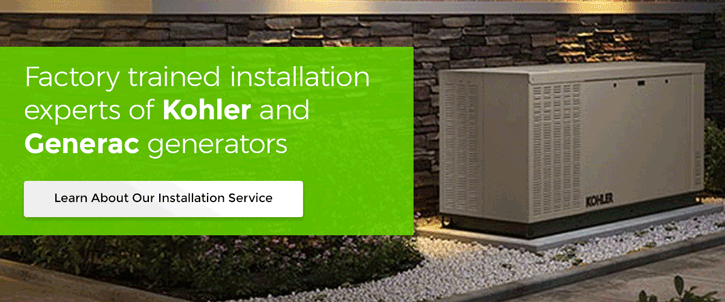Even if your home has smoke detectors, they’ll do nothing to extinguish a dangerous fire. If you’re cooking and grease ignites, water won’t help put it out. Or, if you have a faulty circuit breaker, a fire could begin to brew from your laundry room— out of sight.
These aren’t the only kind of dangerous household fires. Many homeowners underestimate the threat of electrical fires, which are often caused by faulty outlets or wiring. If lacking proper care, power strips and breakers can spark and threaten your safety.
Having fire extinguishers in your home helps to put you in control of stopping small accidents, or suppressing flames while you and family escape and get help.
Here’s some tips of choosing and using household fire extinguishers to safeguard your home and loved ones against volatile electrical fires, or fires of all sorts.
Which class and rating of fire extinguisher is best?
Household fire extinguishers are classified into various classes:
- Class A. Best for outing combusting wood, clothes or paper. This is the perfect class for if a candle ignites a notebook or if your trash starts to smoke.
- Class B. Best for flammable liquids such as gasoline, kerosene and oil-based paints. These types of fires need to be smothered to remove oxygen. Depending on your type of cooking stove, this might be a good class for your kitchen.
- Class C. Best for outing engulfed appliances, tools or equipment connected to live electricity. This is a safe class to keep in a living room or bedroom for guard against faulty power strips or outlets and meant to guard against electrical fires.
- Class D. Best for preventing the spread of combustible metals including titanium, magnesium, aluminum and potassium— to name a few. Water won’t work to out these dangerous fires!
- Class K. Best for cooking-based fires involving greases, oils, vegetable and animal fat. This is a great class to keep in the kitchen, across from your stove.
In addition to your class label, any household fire extinguisher will have a classification rating— distinguished by a number preceding the A, B or C letter. As a general rule, the higher the number, the more effective it is against that type of fire. For example, a 4-A rated extinguisher is more powerful at outing ordinary combustibles than a 2-A.
What’s inside my fire extinguisher?
Different types of fires require different elements inside the extinguisher. Here’s few types of portable fire extinguishers:
- Water and foam. These extinguishers work by taking away heat from the flames, separating oxygen from the fire. This is the what’s inside of Class A models and should NOT be sprayed on flammable liquids or electrical fires, else it could cause it to spread or create a shock hazard.
- Carbon dioxide. This extinguisher also removes oxygen and heat from the fire with a cold discharge. While this type will do nothing to help combusting paper or wood, it’s very effective against both Class B & C fires.
- Multi-purpose dry chemical. Interrupt the chemical reaction of Class A, B & C fires with this great multi-purpose extinguisher for household protection. It is not to be confused with an ordinary dry chemical extinguisher, which is only designed for B & C.
- Wet chemical. This is your kitchen extinguisher! It’s used to fight Class K fires from cooking combustibles like fat and oil, though some can be used on Class A fires as well.
- Dry powder. While liquid can’t combat metal fires, dry powder can. These fire extinguishers are specifically designed to separate the fuel from the oxygen by removing the heat element, and while perfect for outing Class D fires, are ineffective against all other classes.
Does the size of my fire extinguisher matter?
Generally, a bigger fire extinguisher packs more of a blast, but sometimes heavy extinguishers can be a burden, and may not be necessary for all situations.
- 10-pound extinguishers. Best for a garage or workshop space, where a fire might go wild and grow before anyone notices.
- 5-pound extinguishers. Best for most household rooms, such as a kitchen, where the fire will begin in a relatively contained area.
- 2-pound extinguishers. Best for a very small space like a shed or your car, to quickly out a fresh fire.
Traditionally, a 5-pound container will suffix for an average sized room, but in an open space where a fire would have more room to spread, a 10-pound extinguisher might be ideal.
The National Fire Protection Association (NFPA) recommends choosing a fire extinguisher that’s “large enough to put out a small fire, but not so heavy as to be difficult to handle.” The NFPA advises children should not be trained to use an extinguisher, so be sure to choose a weight which adults in the household are comfortable holding.
Where should I keep a fire extinguisher(s)?
NFPA recommends keeping a fire extinguisher on each floor of your home, minimum.
With 65% of all fires starting in the kitchen, this is an important room to have one in, to avoid grease accidents (but don’t store it next to the stove, so it’s within reach if the stovetop catches fire!). Your laundry room is another area that deserves its own extinguisher, as lint is highly flammable and another common starting point for fire.
Many homeowners find greater peace of mind keeping a fire extinguisher is every bedroom as well, to ensure safety is within a few steps of your sleeping family.
How can I be sure I’m using my fire extinguisher correctly?
It’s not hard to operate a fire extinguisher. Remember this simple acronym: PASS.
- P. P stands for “pull.” Release the locking mechanism and be sure to hold the extinguisher so the nozzle points away, before pulling the pin.
- A. Ready? It’s time to “aim.” Point the extinguisher at the base of the fire.
- S. “Squeeze” the lever slowly and with even pressure to release the white cloud of protection.
- S. The last letter stands for “sweep.” Move the nozzle from side to side to ensure it targets the full spread of flames.
Safeguard your Home Against Electrical Fires
Although most household fires start by means of human errors, like accidents cooking or smoking cigarettes inside, electrical fires are also very common. These are often due to faulty power points or wiring.
The best ways to prevent electrical fires are to have routine inspections of your home, and to continually educate yourself on safe practices. For example, do you have your outlets childproofed? Do you know how to access extension cords for damage?
Head over to our blog to read up on some electrical tips. The, download our Electric Toolkit too, which will show you how to check your outlets, ground your home and more.
Give us a call to schedule an in-home inspection to ensure you’re meeting all safety precautions. Our electricians are more than happy to help.



